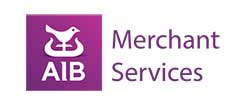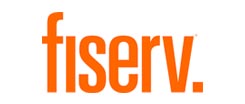- Compare Card Processing Rates from as low as 0.27%
- Keep your card processing fees to a minimum
- Direct access to 80% of the UK’s leading acquiring banks
- Make the right choice for your next UK payment provider
- Ensure your rates always remain competitive
- Seamlessly switch payment provider without a hitch






We're rated Excellent on
Understanding Payments Now: Top Trends and Insights for Consumers
The way we pay for goods and services is evolving rapidly, driven by technological advancements and changing consumer preferences. From contactless payments to digital wallets like Apple Pay, the payment solutions available today offer convenience, speed, and enhanced security.
For UK consumers, understanding these trends is crucial to managing money efficiently, avoiding unnecessary fees, and making the most of modern payment methods. In this guide, we’ll explore the latest developments in payments now, helping you navigate the future of spending.
The Rise of Contactless and Digital Payments
Contactless payments have become the norm, with millions of transactions processed daily across the UK. Whether using a credit or debit card, smartphone, or wearable device, tapping to pay is faster and more convenient than inserting a card or handling cash.
How Contactless Works
-
Simply hold your card or phone near a contactless terminal.
-
Transactions under £100 (the UK limit) don’t require a PIN.
-
Popular options include Apple Pay, Google Pay, and contactless cards.
The majority of UK stores now accept contactless payments, making it a preferred payment method for everyday purchases.
Digital Wallets: Apple Pay and Beyond
Apple Pay has revolutionised paying online and in-person by allowing users to store credit and debit card details securely on their iPhone, iPad, or other devices.
Benefits of Apple Pay Online & In-Store
-
Secure: Uses tokenisation, so your actual card details aren’t shared with the merchant.
-
Convenient: No need to carry a physical wallet—just your phone.
-
Widely Accepted: Works wherever contactless payments are available.
To setup Apple Pay:
-
Open the Wallet app on your iPhone.
-
Tap “+” to create a new card.
-
Follow the prompts to verify your account.
Software requirements apply, so ensure your device is updated.
The Shift Away from Cash
While cash is still used, its popularity is declining. The average UK consumer now relies more on card and mobile payments. Reasons for this shift include:
-
Speed: No need to count change.
-
Hygiene: Less physical contact post-pandemic.
-
Tracking: Easier to monitor transactions via bank account statements.
However, some small businesses and independent shops still prefer cash, so it’s wise to carry some for emergencies.
Recurring Transactions and Subscription Services
Many services—from streaming platforms to gym memberships—use recurring transactions, automatically deducting payments from your bank account or card.
Managing Recurring Payments
-
Check bank statements regularly to avoid unwanted charges.
-
Set reminders before minimum payment due dates.
-
Cancel unused subscriptions to save money.
Some banks allow you to block recurring charges if needed.
Security Concerns and Fraud Prevention
With the rise of digital payments, security is a top priority. Here’s how to stay safe:
Best Practices for Secure Payments
✔ Use Apple Pay or Google Pay for added security (tokenisation protects your data).
✔ Avoid saving card details on unfamiliar websites.
✔ Enable two-factor authentication (2FA) where eligible.
✔ Monitor transactions for unauthorised activity.
If you spot fraud, contact your bank immediately for a refund.
Travel Cards and Multi-Currency Payments
For those travelling abroad, travel cards (like Revolut or Wise) offer benefits over traditional debit or credit cards:
-
Lower fees on foreign currency transactions.
-
Better exchange rates than airports or banks.
-
Some allow access to multiple currencies in one account.
Before your trip, compare costs and choose the best payment solution for your needs.
The Future of Payments: What’s Next?
The future of payments is set to bring even more innovation:
1. Biometric Authentication
Fingerprint and facial recognition will replace PINs for secure verification.
2. Buy Now, Pay Later (BNPL)
Services like Klarna and Clearpay allow splitting purchases into instalments—useful but requires discipline to avoid debt.
3. Cryptocurrency Payments
Some merchants now accept Bitcoin and other digital currencies, though adoption remains limited.
4. Smart Checkout Solutions
Amazon’s “Just Walk Out” technology eliminates the checkout process—simply pick items and go.
Choosing the Right Payment Method for You
With so many options, selecting the best payment method depends on your needs:
|
Scenario |
Best Payment Option |
|---|---|
|
Everyday shopping |
Contactless debit card or Apple Pay |
|
Online purchases |
Credit card (for buyer protection) |
|
Subscriptions |
Debit card with spending alerts |
|
Travel |
Multi-currency travel card |
Final Thoughts
The world of payments now is faster, more flexible, and increasingly digital. Whether you prefer contactless payments, Apple Pay online, or traditional bank account transfers, staying informed helps you pay with confidence.
By understanding fees, security, and emerging trends, you can optimise your spending and avoid common pitfalls. The key is to choose payment solutions that align with your lifestyle while keeping your money safe.
